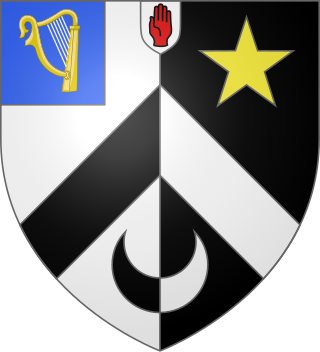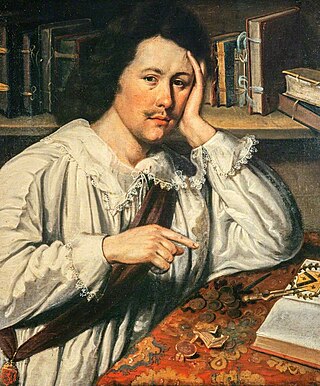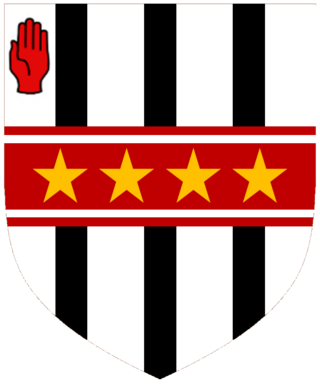
There have been three baronetcies created for members of the Grey family, one in the Baronetage of England, one in the Baronetage of Great Britain and one in the Baronetage of the United Kingdom. Two of the creations are extant as of 2007.
Nineteen baronetcies have been created for persons with the surname Hamilton, eight in the Baronetage of Nova Scotia, one in the Baronetage of England, five in the Baronetage of Ireland, one in the Baronetage of Great Britain and four in the Baronetage of the United Kingdom. As of 2008 two creations are extant, two are dormant, two are either extinct or dormant and twelve extinct.

There have been two baronetcies created for persons with the surname Burnett, one in the Baronetage of Nova Scotia and one in the Baronetage of the United Kingdom. As of 2010 one creation is extant while one is dormant.
There have been two baronetcies created for persons with the surname Roche, once in the baronetage of Ireland and once in the baronetage of the United Kingdom. One creation is extant as of 2010.
The Adair Baronetcy, of Flixton Hall in the County of Suffolk, was a title in the Baronetage of the United Kingdom. It was created on 2 August 1838 for Robert Adair. He was succeeded by his eldest son, the second Baronet. He sat as Member of Parliament for Cambridge. In 1873 he was created Baron Waveney, of South Elmham in the County of Suffolk, in the Peerage of the United Kingdom. The barony became extinct on his death in 1886 while he was succeeded in the baronetcy by his younger brother, Hugh Adair, the third Baronet. The latter had earlier represented Ipswich in Parliament. Two of his sons, the fourth and fifth Baronets, both succeeded in the title. The fifth Baronet's son, the sixth Baronet, was a major general in the British Army. The title became extinct on the latter's death in 1988.
There have been five baronetcies created for persons with the surname Alexander, one in the Baronetage of Nova Scotia and four in the Baronetage of the United Kingdom. Four of the creations are extant as of 2010.

The Alexander, later Cable-Alexander Baronetcy, of the City of Dublin, is a title in the Baronetage of the United Kingdom. It was created on 11 December 1809 for William Alexander, Lord Mayor of Dublin. The second Baronet was a Director of the Bank of Ireland. The third Baronet was Attorney-General to Albert Edward, Prince of Wales, later Edward VII. The seventh Baronet assumed in 1931 by deed poll the additional surname of Cable. As of 31 December 2013 the present Baronet has not successfully proven his succession and is therefore not on the Official Roll of the Baronetage, with the baronetcy considered dormant.

There have been two baronetcies created for persons with the surname Goschen, both in the Baronetage of the United Kingdom. One creation is extant as of 2017.
There have been two baronetcies created for persons with the surname Proby, one in the Baronetage of England and one in the Baronetage of the United Kingdom. The first creation is extinct while the second creation is extant.

There have been four baronetcies created for persons with the surname Hope, three in the Baronetage of Nova Scotia and one in the Baronetage of the United Kingdom. As of 2010 one creation is extant, one dormant and two extinct.

There have been three baronetcies created for members of Clan Balfour, one in the Baronetage of Nova Scotia and two in the Baronetage of the United Kingdom. One is extant and a subsidiary title of Baron Riverdale.
There have been two baronetcies created for persons with the surname Markham, one in the Baronetage of England and one in the Baronetage of the United Kingdom.
There have been seven baronetcies created for persons with the surname Lawrence, one in the Baronetage of England, one in the Baronetage of Great Britain and five in the Baronetage of the United Kingdom.
There have been three baronetcies created for persons with the surname Denny, one in the Baronetage of England, one in the Baronetage of Ireland and one in the Baronetage of the United Kingdom. As of 2014 two of the creations are extant.

The Jaffray Baronetcy, of Skilts in the Parish of Studley in the County of Warwick, is a title in the Baronetage of the United Kingdom. It was created on 8 October 1892 for the journalist and newspaper proprietor John Jaffray. He was the co-founder of the Birmingham Post and Birmingham Mail.
There have been two baronetcies created for members of the Wolseley family, one in the Baronetage of England and one in the Baronetage of Ireland. As of 2018, the Wolseley Baronetcy of Mount Wolseley is dormant.

There have been two baronetcies created for the Knowles family, originally a branch of the Knollys family known as Knollys of Stanford. One is in the Baronetage of Great Britain, which is extant, and one in the Baronetage of the United Kingdom, which is extinct.

The Craufurd Baronetcy, of Kilbirney in south-west Scotland, is a title in the Baronetage of Great Britain. It was created on 8 June 1781 for Alexander Craufurd, the member of an ancient Scottish family. The General and Major-General were elected to the Nottinghamshire East Retford of the almost wholly unreformed (pre-1832) House of Commons.
There have been two baronetcies created for members of the Macdonald family, one in the Baronetage of Nova Scotia and one in the Baronetage of the United Kingdom. One creation is extant.
There have been two baronetcies created for persons with the surname Stephen, both in the Baronetage of the United Kingdom. Both creations are extinct.










